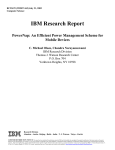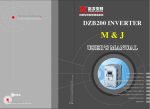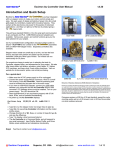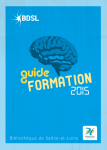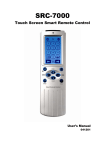Download Commissioning devices for automation systems
Transcript
US 20130191755A1
(19) United States
(12) Patent Application Publication (10) Pub. No.: US 2013/0191755 A1
Balog et al.
(54)
(43) Pub. Date:
COMMISSIONING DEVICES FOR
(52)
AUTOMATION SYSTEMS
Jul. 25, 2013
US. Cl.
CPC ................................ .. H04L 41/0806 (2013.01)
USPC
......................................... .. 715/735; 709/222
(71) Applicant: Zonoff, Inc., Malvem, PA (US)
(72) Inventors: Michael Balog, Philadelphia, PA (US);
Michael Harris, Phoenixville, PA (US);
Ryan Buchert, Phoenixville, PA (US)
(73)
(57)
ABSTRACT
Remote commissioning for an automation system enables a
retailer to sell a neW device to a customer pre-con?gured to
Work together With devices that are already a part of the user’ s
Assignee: Zonoff, Inc., Malvem, PA (US)
(21) APP1- NO? 13/748,350
automation system. Knowledge of hoW the devices are likely
to be used at the automation system’s location, a list of exist
(22) Filed:
Jan- 23: 2013
ing devices already installed and hoW they are con?gured,
_
(60)
_
possible input from the customer, and the end user’s current
Related U‘s‘ Apphcatlon Data
provisional application No_ 61/632,337’ ?led on Jan
23, 2012, provisional application NO_ 61/632,338’
?led on Jan 23’ 2012
usage patterns are optionally used to con?gure the devices
before they leave the store. Assisted local commissioning for
an automation device enables an end user to commission
devices themselves by simplifying the installation and com
missioning process. The system uses a reference database of
devices that includes information on hoW to commission the
Publication Classi?cation
(51)
Int. Cl.
H04L 12/24
devices along With user-manual information and pictures for
physical installation, and setup instructions so the system can
Walk a user through the process step by step.
(2006.01)
Commissioning Server (1)
User Info (1.1)
Usage-
lmormat'on
l:>
Recommendation
User Configurations
Engine (1.2)
(13)
U sa
g
e
M 0 d es
I
|:> Device Scripts (1.4)
Default Scenarios
Automation Scripts
Default Device List
Internet
i Commissioning Tool (2) I.
{
Gateway Controller (3)
Automation Software (3.1)
Broadband
Connection (2.1)
Commissioning
Software (2.2)
@l@
Offsite Distributer
E
Customer Home
Patent Application Publication
Jul. 25, 2013 Sheet 1 0f 10
US 2013/0191755 A1
Figure 1a
Commissioning Server (1)
User ll'lfO (1.1)
Usage
Information
‘:>
Recommendation
User Configurations
Engine (1.2)
(13)
Usage Models
Scenarios
Default Scenarios
Device List
Default Device List
‘:> Device Scripts (1 .4)
Automation Scripts
(1.5)
Internet
; Commissioning Tool (2) 2:;
Gateway Controller (3)
;
Broadband
Automation Software (3.1)
'5
Connection (2.1)
Commissioning
Software (2.2)
Sensor (4)
Offsite Distributer
Customer Home
Patent Application Publication
Jul. 25, 2013 Sheet 2 of 10
US 2013/0191755 A1
Figure 1b
Commissioning Server (1)
User Info (1.1)
Usage
-
lnformat'on
|:>
Recommendation
User Configurations
Engine (1.2)
(1.3)
Usa e Models
g
Scenarios
Default Scenarios
Device List
Default Device List
|:> Device Scripts (1.4)
Automation Scripts
(15)
Internet
Commissioning Tool (2)
Gateway Controller (3)
Automation Software (3.1)
Broadband
Connection (2.1)
VA
Commissioning
Software (2.2)
:
i “%
I
Offsite Distributer
5
Li g ht(5)
Sensor (4)
Customer Home
‘E;
Patent Application Publication
Jul. 25, 2013 Sheet 3 0f 10
US 2013/0191755 A1
Figure 2a
Commissioning Server (1)
User into (1.1)
Usage
Information
Scenarios
Recommendation
User Configurations
Engine (1 .2)
(13)
Usage Models
Device Scripts (1.4)
Default Scenarios
Automation Scripts
Device List
Default Device List
5 Commissioning Tool (2)
I
Broadband
-
(15)
Gateway Controller (3)
iPad (7)
Automation Software ( 3.1 )
‘El
Connection (2.1)
Commissioning
Software (2.2)
I
I
§ Thermostat I6
‘
WiFi
Oifsite Distributer
5
;
Customer Home
Patent Application Publication
Jul. 25, 2013 Sheet 4 0f 10
US 2013/0191755 A1
Figure 2b
Commissioning Server (1)
User |iif0 (1.1)
Usage
Information
|:i>
Recommendation
User Configurations
Engine (1.2)
(13)
Usage Models
|:> Device Scripts (1.4)
Scenarios
Default Scenarios
Device List
Deiault Device List
Automation Scripts
Commissioning Tool (2) 5
5
Broadband
WiFi |
Commissioning
i 3x:.....................................
i i
I
Oifsite Distributer
Gateway Controller (3)
Automation Software (3.1)
connect'omm)
soitwamz'z)
(1-5)
;
Thermostat I6)
IZ-WaveI
h
I ......................................a.1
|. 3fv
| i
Customer Home
i_ighi(5)
iPad (7) 3;
III
| WiFi |
My.collimator:
Patent Application Publication
Jul. 25, 2013 Sheet 5 0f 10
US 2013/0191755 A1
Figure 3a
Commissioning Server (1)
User into (1.1)
Usage
lmormation
:>
Recommendation
User Con?gurations
Engine (1.2)
(13)
Usage Models
:> Device Scripts (1.4)
Default Scenarios
Automation Scripts
Device List
Default Device List
Commissioning Tool (2) 3
(1-5)
Gateway Controller (3)
Automation Software (3.1)
Broadband
Connection (2.1)
WiFi |
IZ-WaveI
| WiFi |
Commissioning
Software (2.2)
Thermostat l6)
@
Sensor (4)
Door Lock 8
Offsite Distributer
E
Customer Home
Patent Application Publication
Jul. 25, 2013 Sheet 6 0f 10
US 2013/0191755 A1
Figure 3b
Commissioning Server (1)
User into (1.1)
Usage
Information
|:>
Recommendation
User Con?gurations
Engine (1.2)
(13)
Usage Models
|:> Device Scripts (1.4)
Scenarios
Default Scenarios
Device List
Default Device List
Automation Scripts
3 Commissioning Tool (2)
Broadband
Connection (2.1)
(15)
Gateway Controller (3)
'
iPad (7)
Automation Software (3.1)
_
‘1|
WiFi |
IZ-WaveI
| WiFi |
Commissioning
Software (2.2)
Thermostat (6)
@
WiFi/ZigBee
Brid
9
%
Offsite Distributer
;
Home
Patent Application Publication
Jul. 25, 2013 Sheet 7 0f 10
US 2013/0191755 A1
Figure 4
_;
Start
‘32
:5
Purc hase
5:
Check User List
Create New Account, don‘t
reference usage information later
Y
2;
Load purchased
5;
5 devices
Device
intoList
User‘s
a
Y
User‘s Device
*
List (3)
Default Device
List (4)
1;
Usage Model all
Generator (6)
User‘s Usage
Information (5
“
User Usage
Scenarios (7
User‘s Device 5*
List (3)
3; Configuration ‘is
Generator
‘_
(8)
Default
1: Device List (4
User Device
Configurations 9
User‘s Device
1"
List (3)
Commisssioning 22'
:_
Scriptor (10)
Default
Device List (4
5
Device Configuration 5 %:
Scripts (11)
Patent Application Publication
Jul. 25, 2013 Sheet 8 0f 10
US 2013/0191755 A1
Figure 5
Device Database (1)
Device
User Manual Pictures
Commisioning
and Step by Step
Information (1.1)
Instructions (1.2)
Wem WWW-WWW
-;
5;
Gateway Controller (4)
Broadband and Local
Internet Connection
Internet (2)
WI
Automation Software (4.2)
Broadband and Local
Internet Connection (3.1)
Commissioning
User Interface
Application
—
(3.2)
(3 3)
'
Existing User Interface Platform (3)
Connection
Standard (5)
..
P Host
u
rocessor
:53
(6,2)
Device to be Installed
_
Hardware Platform (6)
Home
Home
Automation Iii
Standard
Interface (6.1)
Automation
5*
_
and Commlssloned (7)
Standard
Interface (7.1)
Patent Application Publication
Jul. 25, 2013 Sheet 9 of 10
US 2013/0191755 A1
Figure 6
Zonoff (2)
Zonoff (1 )
5 Mobile Manager
N
Mobile Manager
12.1
ex (v )
Light Switch (5.1)
.
Zonoff (3)
Zonoff (4)
CT-8O
Step 2
'
‘
Zonoff (6)
Test
Picture
Picture
Off
1234
meal
3; Mobile Manager
'
Mobile Manager
;_ Mobile Manager
- Thermostat (5.2)
Zonoff (5)
Adding... Success
Success or
Advanced (2.2)
Failure
description
bHe
'.. :1
Patent Application Publication
Jul. 25, 2013 Sheet 10 0f 10
US 2013/0191755 A1
Figure 7
Zonoff (1)
Add
Remove
Diagnose
Diagnose
Setup
i
Mobile Manager
Zonoff (2)
Network Health
Traffic Watcher
Traffic Health
V
Mobile Manager
Zonoff (3)
Network Health
Traffic Watcher
Kitchen Light
Bedroom Light
Y
Thermostat
Zonoff (5)
Outside Light
Traffic Watcher
Controller
-->
--> Bedroom Light -->
Mobile Manager
--> Thermostat
Zonoff (4)
Mobile Manager
Outside Light
Can see
Thermostat
4
Look for neighbors
Mobile Manager
Jul. 25, 2013
US 2013/0191755 A1
COMMISSIONING DEVICES FOR
AUTOMATION SYSTEMS
from http://www.pemag.com/ar‘ticle2/0.2817.2340429,00.
asp incorporated herein by reference in its entirety. Informa
tion on Zigbee, Zwave, Bluetooth, NFC, and Wi? can be
CROSS-REFERENCE TO RELATED
APPLICATIONS
[0001]
This application claims the bene?t of the ?ling date
ofU.S. provisional application Nos. 61/632,337 and 61/632,
338, both of which were ?led on Jan. 23, 2012, the teachings
of both of which are incorporated herein by reference in their
entirety.
(http://www.Zigbee.org/Speci?cations/ZigBee/Overview.
aspx), “Z-Wave Protocol Overview” Document No.:
SDS10243 (http://www.Z-wavealliance.org/about-Z-wave),
http s ://bluetooth. org/About/bluetooth_sig .htm, http ://www.
near?eldcommunication.org/, and http://www.wi-?.org/, the
contents of which are incorporated herein by reference in
their entirety. Further examples include IEEE 80215.4,
BACKGROUND
[0002] 1. Field of the Invention
[0003] The present invention relates to automation sys
tems. More particularly but not exclusively, the invention
relates to techniques for commissioning devices for automa
tion systems for homes, businesses, campuses, buildings, and
the like.
[0004]
[0005]
found in “ZigBee Speci?cation” Document 053474r19
2. Description of the Related Art
This section introduces concepts that may help
facilitate a better understanding of the invention. Accord
ingly, the statements of this section are to be read in that light
and are not to be understood as admissions about what is prior
art or what is not prior art. In the following, the term “home
automation” may be used in descriptions of the prior art and
embodiments of the invention. While home automation has a
SmartLab’s Insteon dual-mesh technology, EnOcean low
power or battery-less wireless technology, and 6LoWPAN
IPv6-based automation network.
[0009]
This complexity of these systems, interfaces, and
con?guration procedures, along with the cost of a trained
installer has held home automation back from mass deploy
ment. Some suppliers have attempted to simplify the com
missioning process, but the resulting process has not been
made simple enough. Other suppliers sell pre-con?gured sys
tems, but the resulting systems are less useful and are dif?cult
to expand.
SUMMARY
[0010] This speci?cation discloses two different types of
commissioning of devices for home automation systems:
remote commissioning and assisted local commissioning. In
speci?c meaning in the prior art, it should be interpreted in
this speci?cation as applicable to not just personal residences
but also dwellings of all types including homes, factories,
remote commissioning, an automation device (e.g., a Z-wave
businesses, and business and/or educational campuses. Fur
the automation device at home. The end-user is then able to
ther, it is applicable to regions or logical groupings of dwell
install the pre-commissioned device into his/her home with
relative ease compared to existing technology. In assisted
local commissioning, the end-user uses an existing comput
ing platform, such as a smart-phone, tablet, and/or laptop
computer, to access information that provides step-by-step
instructions to guide the end-user through the commissioning
ings within a region (e.g., a micro-grid associated with a
particular utility company). Finally, the term “automation”
should be understood to include operations such as security
management, facilities management, and energy manage
ment.
[0006]
Conventional home automation systems are gener
ally constructed using separately purchased, independent
components that are commissioned to work together for the
needs of a particular installation. In some cases, these com
ponents are not even designed to work together, and glue logic
is required to commission them into an interoperable system.
Because of the wide variety of setup possibilities, the inter
controllable doorlock) is commissioned into (i.e., logically
added to) the end-user’s system before the end-user receives
process for an automation device that is to be added to the
home.
[0011] Remote commissioning uses information from
many sources to determine how a system should be con?g
ured and then delivers the con?guration to the devices with
minimal interaction by the end-user or retailer. Information
used for determining system con?guration includes: knowl
faces for the commissioning process are so complex that a
trained installer or a sophisticated end-user are generally the
edge of how the devices are likely to be used with the home,
only ones able to perform these installations.
[0007] The process of commissioning can involve many
?gured, possible input from the customer, and the end-user’ s
current usage patterns. The method of delivering con?gura
a list of existing devices in the home and how they are con
steps such as “mating” the devices so they are aware of
tions can vary, but some methods can include updates to
each-other, setting up “scenes” de?ning states of the devices
working together, and creating “events” or “timers” to create
devices in the home via the Internet or via standards used for
home automation in a combination of steps at the home and/or
actual automation. In many cases, a variety of radio-fre
at the place distributing the devices.
quency (RF) networks may be involved, each with different
[0012] Knowledge of how devices are likely to be used in a
home, business, or neighborhood can be discovered by a
connection requirements and con?guration complexities.
End-users do not normally know what is involved in getting
these devices and systems to work with each other and instead
rely on trained installers to ?gure out what they want and to
create it for them.
[0008] Examples of networks involved in home automa
tion, security and energy-management systems include Zig
bee, Zwave, Bluetooth, near-?eld communications (NFC),
number of methods, including querying con?guration in the
device or gathering RF network interconnection databases
(e.g., stored in persistent storage such as EEPROMS in
installed devices). The knowledge is useful in determining
scenarios of how the system will likely be used. From such
knowledge, for example, it may be determined that, if an
end-user has or will have a select set of devices, then they will
and WiFi. An overview of some of these networks and their
use can be found in “After 1 1n: The future of Wireless Home
desire speci?c actions to take place associated with those
devices. Alternatively or additionally, it may be determined
Networking,” PC magaZine article, Feb. 5, 2009, retrieved
from the subset of devices what additional devices an end
Jul. 25, 2013
US 2013/0191755 A1
user may desire, for use as part of an up-sell strategy. All of
install even happens. Once the device is included into the
these possible scenarios Will result in settings for the com
existing ecosystem, a user provides feedback for speci?c
missioning of the system.
usage scenarios that can be generated at that time or after
usage patterns have been established. All of this can also be
taken into account if a neW device has to be commissioned
before leaving the store or Warehouse. If it is to be commis
sioned offsite, then information can be sent to con?guration
tools, Internet servers, or gateWay devices located in the
home. In this Way, the device can identify itself When observ
ing the local RF netWorks for Which it Was commissioned.
[0013] A list of devices and their con?gurations are part of
the knowledge store of hoW devices are likely to be used in the
home. This knowledge is used to decide both hoW the con
?gurations of existing devices should be modi?ed and hoW a
neW device should be commissioned into the existing ecosys
tem. In both cases, the communication paths have to be deter
mined, including identifying bridging betWeen devices using
different communication standards, and commissioning may
be adjusted appropriately.
[0014] Input from the customer can also be taken into
account before commissioning or after the devices have
already been installed on site. When ordering a neW device, a
customer may be asked select questions via a customer touch
point (e.g., an app store, a Web-site purchasing portal such as
AmaZon.com, or a link accessible from the purchasing portal
to the commissioning server or via a sales representative) that
determine hoW system setups should be done. After the
devices are installed, a user may be prompted for ansWers to
questions that affect setup because the installation has com
pleted, or because the user selected to do so via a user inter
face. Certain usage patterns may also trigger a user to be
prompted With questions Whose ansWers may result in
changes to the setup of the devices in their home.
[0015] Usage patterns as mentioned above could both be
used to prompt the user With questions or result in automatic
adjustments to the setting in the home that may not involve the
user at all. By retaining device history, the system can deter
mine usage patterns and preferred device settings that can
result in adjustments to the system or device con?gurations.
Examples of usage patterns that may trigger some automated
or prompted commissioning include: recogniZing select
devices that are alWays used together, recognizing speci?c
device settings that are usually done at certain times of the
day, and speci?c device settings that are done based on cur
rent locations of the end-users.
[0016] A thermostat, for example, may have historically
been adjusted in the morning and again at bedtime to save
energy; yet this usage pattern Would differ if the user Were in
a different location or a different season. Consider the differ
ent usage pattern experienced by a thermostat in Philadelphia,
Pa. in the Winter versus the same device in San Diego, Calif.
in the summer. NoW consider a scenario Where the user has a
connected device that determines home occupancy. This
device may be in another RF netWork that never interacts With
the thermostat. Tying the home occupancy sensor With ther
mostat control and automatically commissioning this rela
tionship into a home controller may take place automatically
or be provided as a recommended con?guration to the user
and then automatically scripted upon approval by the user.
[0017] Where and hoW commissioning takes place Will
[0018] Separate components may Work together to accom
plish assisted local commissioning for home automation
devices. The components used to accomplish this include: an
end user’s existing interface, a large database of devices, a
hardWare device, and a softWare application. The resulting
experience is part of a uni?ed process for installing home
automation devices that provides pictures and explanations to
a user along With real-time feedback and automatic setup
Whenever possible.
[0019] In today’s market, an end-user Who Would be pur
chasing home automation devices is likely to have an existing
generic computing platform With a user interface in the form
of a smart-phone, tablet, laptop, or combination there-of that
can be used for automation device commissioning. By using
their existing interface, the end-user does not have to pur
chase an additional expensive device With a screen that is
dedicated to commissioning. An end-user may likely prefer
and appreciate an automation interface that Was made to run
on their smart phone or laptop because they are familiar With
the usual Ways such applications are organiZed and Work on
these devices.
[0020]
The ability of the commissioning tool to commis
sion a variety of different devices is supported by a device
database. This database contains information needed for the
behind-the-scenes technical commissioning and contains
device photographs and text for various procedures that the
end user may be interested in carrying out relative to his
automation devices. The database is primarily stored in
remote Internet servers (e.g., the “Cloud”), but sections may
be locally cached as Well in select cases for speed. Commis
sioning information that is stored in the database includes
information to represent the device in a generic manner inde
pendent of the Wireless or Wired standard, along With infor
mation that is speci?c to the standard(s) the device uses.
Photographs of the device and text are prepared especially for
this use in order to keep the experience uniform across brands
and connected device standards. Device-speci?c visuals as
Well as generic visuals or graphics may also be used.
[0021] A hardWare platform may be used as a bridge
betWeen the user’s smart-phone, tablet, or laptop and the
device to be commissioned. For example, a hardWare plat
form that includes a Z-Wave radio may be used to alloW a
device is held for resale, in a retail store, or even at the home
smartphone application to communicate With a connected
device that adheres to the Z-Wave standard. The hardWare
platform includes a host processor that is able to adapt to
Whatever interface is required to connect to the interface
Where the device is already physically installed (e.g., com
platform being used, and adapt to Whatever Wireless proces
missioning a doorlock that has just been installed by a car
penter so that it subsequently interoperates With other con
nected automation devices in the home). For in-home
speci?c connected device standard. The physical interface to
the hardWare platform may include physical standards such
vary greatly depending on all of the factors listed above. The
resulting options can include: commissioning at a factory
Where the device is manufactured, at a Warehouse Where
commissioning of a device that is already installed, it should
be poWered on and identi?ed ?rst. Tools can be used to either
identify the device during the inclusion process or before the
sor or physical interface is needed to communicate With a
as USB or Apple Dock, Apple Lightning®, or Wireless stan
dards such as Bluetooth. The home automation processor/
interface may also vary or be designed to support multiple
Jul. 25, 2013
US 2013/0191755 A1
home automation standards of Which there are many.
Examples include Z-Wave, ZigBee, Ant+, and 6LoPan.
usage of those devices, and a list of possible scenarios. The
homeoWner accepts this offer and places an order for this
[0022] In some embodiments, the home automation pro
cessor/interface may include general purpose digital and ana
sensor and scenario.
log radio hardWare and may dynamically doWnload (e.g., via
the cloud) or load (e. g., from local EEPROM) the instructions
Server (1) identi?es the purchaser and queues the order to be
ful?lled by an offsite distributer. The distributer pulls the
particular product, a sensor (4) in this case, from stock. The
distributer uses the Commissioning Tool (2) to ful?ll the
to con?gure the general purpose hardWare so that it may
function to communicate With one or more of the home auto
mation standards, in some cases, as a result of accessing the
Cloud-based database and determining What devices it may
Want to communicate With in the home.
[0023] The user interface presented by the softWare appli
cation Will vary based on the platform being used, but the
[0035]
When the purchase occurs, the Commissioning
order. The tool accomplishes this by using Commissioning
SoftWare (2.2) With information provided by the Recommen
dation Engine (1.2). First, information about the Z-Wave
netWork on GateWay Controller (3) is backed up to Commis
underlining purpose Will be the same in most cases. The user
sioning Server (1) and is sent to Commissioning Tool (2).
This information is used to perform the ?rst step, to logically
is assisted in setup of home automation devices by referenc
ing the database and communicating With the device via the
appropriate home automation standard. The device Will also
add the sensor (4) into the Z-Wave netWork of the Customer
Home. The next step is to send any device-speci?c con?gu
rations de?ned in the Device Scripts (1.4) to the sensor While
function to minimiZe assistance from the user.
it is still at the distributer. Once complete, Commissioning
Tool (2) sends back the updated Z-Wave netWork information
[0024]
Whenever possible, settings Will be done to other
devices in the local netWork or home automation netWork
Without having to interact With the end user.
BRIEF DESCRIPTION OF THE DRAWINGS
[0025]
Other embodiments of the invention Will become
more fully apparent from the folloWing detailed description,
the appended claims, and the accompanying draWings in
Which like reference numerals identify similar or identical
elements.
[0026]
FIG. 1a and FIG. 1b shoW block diagrams represent
ing the purchasing and commissioning of a Z-Wave Sensor to
an existing Z-Wave Ecosystem;
[0027] FIG. 2a and FIG. 2b shoW block diagrams represent
ing the purchasing and commissioning of a thermostat to add
to a pre-existing installation;
[0028] FIG. 3a and FIG. 3b shoW block diagrams represent
ing the purchasing and commissioning of a door lock to add to
a pre-existing installation;
[0029] FIG. 4 shoWs a How diagram representing a process
for producing device con?guration scripts;
[0030] FIG. 5 shoWs a block diagram of major components
in the system and their components and interfaces;
[0031] FIG. 6 shoWs a diagram representing application
interface ?oW for commissioning a neW device; and
[0032] FIG. 7 shoWs a diagram representing some possible
screens and ?oWs for diagnosing installation problems.
to the Commissioning Server (1). The GateWay Controller (3)
receives the updated Z-Wave netWork information, along
With the User Con?gurations (1.3) and Automation Scripts
(1.5) from Commissioning Server (1). This information is
used to con?gure device names and room location as Well as
hoW the system Will handle information that the sensor
reports in the home.
[0036] FIG. 1b shoWs the sensor installed into the home
folloWing the distributer commissioning process. It is noW
part of the Z-Wave netWork (5) of the house, having been
installed and poWered up Without the requirement for any
additional operations at the Customer Home. When occu
pancy information is sent from the sensor, the light in the
home operates as requested by the user de?ned by the sce
nario.
[0037]
FIG. 2a is ablock diagram representing the purchas
ing and commissioning of a Thermostat (6) to add to the
pre-existing installation represented by FIG. 1b. The pur
chase on Commissioning Server (1) is made through a cus
tomer portal on iPad (7) in this example. The purchase is
identi?ed as being made by an existing user after referencing
the User Info (1.1). The neW Thermostat (6) is added to the
User’s Device List (1.1). The Recommendation Engine (1.2)
generates neW usage scenarios based on Usage Models (1.2),
Default Device List (1.2), and, because the user is a pre
existing user, User Usage Information (1.1). Recommenda
tion Engine (1.2) gives the customer choices of hoW they Want
DETAILED DESCRIPTION
the thermostat to operate in the home. For example, one
recommended scenario presented to the user is that, every
[0033] FIG. 1a and FIG. 1b are block diagrams represent
ing, on the loWer left, an Offsite Distributer and, on the loWer
pied, the thermostat Would be controlled into an “energy
right, a Customer Home. GateWay Controller (3) is connected
saving” mode.
to the Internet using WiFi and uses a Wireless standard such as
[0038] With this neW usage scenario, user Con?guration
(1.3) and Automation Scripts (1.5) are generated and sent to
GateWay Controller (3). A purchase request is sent to the
Z-Wave to communicate With and control Light (5). GateWay
(3) contains Automation SoftWare (3.1) to operate connected
time the in-home sensor determines that the home is unoccu
devices in the home. In FIG. 1a, there is an operating Z-Wave
Offsite Distributer for a neW WiFi thermostat (6). The Com
ecosystem that contains Light (5) in the customer’s home.
[0034] FIG. 1a and FIG. 1b depict connectivity through the
missioning Tool (2) is used to setup the Thermostat (6) such
Internet to a Commissioning Server (1) for setup and control
of connected devices. The Commissioning Server (1) offers a
that it Will be able to talk to the WiFi in the home (e.g., if the
home uses WPA security on its home WiFi netWork, then the
light (5) to turn on and off When occupancy is detected in the
WiFi WPA passWord is con?gured into the WiFi parameter
settings of the Thermostat in advance of it being installed in
the home). When this is complete, Thermostat (6) is sent to
home. The Commissioning Server (1) selected the aforemen
the home and installed. To see and control Thermostat (6) via
tioned scenario to present to the user by using the User Info
(1.1) about What devices are installed in the Customer House,
on iPad (7). When the iPad App starts, it Will ask the GateWay
scenario to the homeoWner Where a neW sensor (4) Will enable
WiFi, a neW Thermostat Control Menu is noW made available
Jul. 25, 2013
US 2013/0191755 A1
Controller (3) What devices are in the home and What their
capabilities are. That menu and the information about the neW
Thermostat (6) are sent from GateWay Controller (3), Which
Was made aWare that there is a neW Thermostat (6) by Com
missioning Server (1). GateWay Controller (3) may noW com
municate to the neWly installed Thermostat (6) using Internet
Protocol (IP) via the house WiFi.
[0039] FIG. 3a is a block diagram representing the purchas
ing and commissioning of Door Lock (8) to add to the pre
existing installation represented by FIG. 2b. The purchase is
performed this time by a Webpage portal via a broWser such as
the Apple Safari broWser running on iPad (7). When the
purchase is made, it is determined that the user is an existing
user after referencing the User Info (1.1). NeW Door Lock (8)
is added to the User’s Device List (1.1), and the Recommen
dation Engine (1.2) is kicked off. The engine generates neW
scenarios based on Usage Models (1.2), Default Device List
(1.2), and, because the user is a pre-existing user, there is User
Usage Information (1 .1). With these neW scenarios generated,
the Recommendation Engine (1.2) Will present to the home
oWner the option for the Door Lock (8) to put the Thermostat
(6) into a “comfort” mode Whenever the door is unlocked.
[0040] FIG. 3b shoWs the Door Lock (8) already commis
sioned by the Commissioning Tool (2). This time the tool
contained a ZigBee radio since this Door Lock (8) has a
WiFi, 4G, or GPRS. The Default Device Database (1) is also
connected to the Internet (2). From time to time, the User
Interface (3.3) Will fetch User Manual Pictures and Step-by
Step Instructions (1.2) from the Default Device Database (1)
via the Internet (2). From time to time, the Commissioning
Application (3 .2) Will fetch Device Commissioning Informa
tion (1.1) located on the Default Device Database (1) via the
Internet (2). The Commissioning Application (3.2) is con
trolled via the User Interface (3 .3). When the Commissioning
Application (3.2) is instructed by the User Interface (3.3) to
interface With the Device to be Installed and Commissioned
(7) it does so through the HardWare Platform (6). The Existing
User Interface Platform (3) is connected to the HardWare
Platform (6) via some Connection Standard (5) that can
include a Wired connection such as USB or Apple Dock or it
could connect via a Wireless standard such as LP Bluetooth or
NFC or it may be a part or con?guration option of Existing
User Interface Platform (3). The Host Processor (6.2) on the
HardWare Platform (6) Will handle communicating With the
Existing User Interface Platform (3) via the Connection Stan
dard (5). The Host Processor (6.2) Will connect to the Device
to be Installed and Commissioned (7) via the Home Automa
tion Standard Interface (6.1) and (7.1). It is through all of
these connections that the Commissioning Application (3.2)
is able to properly commission the Device to be Installed and
ZigBee radio interface. In this example, this process is made
Commissioned (7). During this entire process, the GateWay
more complex because the neW Door Lock (8) is using a
different RF standard than the standard used by the other
Controller’s automation SoftWare (4.2) is noti?ed of the pro
cess through the Local or Broadband Internet (2). Metadata,
automation devices currently in the home, Which standard in
this example is Z-Wave. Thermostat (6) is using WiFi, the
Light and Sensor are using Z-Wave, and Door Lock (8) is
using the Zigbee Wireless standard. Because the GateWay
Controller (3) does not support ZigBee natively, a WiFi-to
ZigBee bridge (9) Was bundled With the Door Lock at Com
missioning. This bridge (9) enables GateWay Controller (3) to
talk to Door Lock (8). NoW When ZigBee Door Lock (8) is
un-locked, WiFi Thermostat (6) is put into a “comfort” mode
via the GateWay Controller. At the same time When Sensor (4)
sees that that home is occupied, the Lights (5) turn on.
[0041] FIG. 4 is a How diagram of the process of generating
Device Con?guration Scripts (11). The ?rst step is to check
such as names and locations, may be sent to the GateWay
Controller (4) via the Commissioning Application (3.2).
[0043]
FIG. 6 is a diagram representing an example appli
cation interface ?oW for commissioning a neW device. The
user interface example shoWn is for a smart-phone such as an
Apple iPhone or Google Android operating system based
smartphone such as the Motorola Droid X, With a relatively
limited screen siZe. Each step is represented by a screen shot
With the company/application name “Zonoff” at the top and
the generic name for the application “Mobile Manager” at the
bottom. In cases Where this softWare is supplied to a third
party, for example, a third party With the name of Home
Automation Controllers, Inc. (HAC, Inc.), “Zonoff” may be
the User List (1) and identify if the user is a neW user. If so,
then a neW account is created. Next, purchased devices are
replaced by a title such as “HAC, Inc.,” or a brand name such
as “EZ-Kamish.” The How starts With top menu screen (1)
loaded into the User’s Device List (3). After that, Usage
Where the user can choose to “add” a neW device. Upon
Model Generator (6) uses inputs from the User’ s Device List
selecting “Add,” the device displays the next screen, Which
supports the second step of commissioning (2). This step
(3), Default Device List (4), and User’s Usage Information
(5) to create User Usage Scenarios (7). The Con?guration
Generator (8) creates User Device Con?gurations (9) by ref
erencing the User Usage Scenarios (7), the User’s Device List
(3), and the Default Device List (4). Finally, the Commission
ing Scripter (10) creates Device Con?guration Scripts (11)
referencing the User Device Con?gurations (9), the User’s
Device List (3), and the Default Device List (4).
[0042] FIG. 5 is a block diagram of major components in
the system and their sub-systems and interfaces With the
major components being a Default Device Database (1), an
Existing User Interface Platform (3), a HardWare Platform
(6), and a Device to be Installed and Commissioned (7). The
end user Will interact With the User Interface (3 .3) located on
the Existing User Interface Platform (3), Which functions as a
commissioning tool. The Existing User Interface Platform (3)
alloWs the user to select “Advanced” (2.2) to bypass an
assisted installation or select “Search” (2.1) to enter search
criteria to ?nd the device the user is about to install. In some
cases, the Mobile Manager application may attempt to iden
tify the device automatically via a handshaking identi?cation
routine it performs With the device. During such automation
identi?cation, the hardWare interface to the automation
device (e. g., HardWare Platform (6) of FIG. 5) may attempt to
communicate With the device using different hardWare and
softWare protocols it supports. These protocols may be built
into the hardWare platform or doWnloaded from the Internet
or other sources, potentially from the automation device itself
using a simple baseline protocol that both devices understand.
In either case, selections of this menu (2) are fetched from the
default device database described in FIG. 5. After the user
couldbe a smart-phone, tablet, or laptop. It is connected to the
selects the search criteria in step (2), in step (3) the screen
Internet (2) by its Broadband Internet Connection (3.1) via a
displays the results in picture and short description form,
Wired standard such as Ethernet or a Wireless standard such as
Which information is also fetched from the database men
Jul. 25, 2013
US 2013/0191755 A1
tioned With respect to FIG. 5. The user is able to use screen (3)
to scroll until the correct device is found. After the user selects
the device from search results (3), the user is able to start the
installation process With picture and text descriptions (4) all
fetched from the database mentioned in FIG. 5. The number
of steps for installation process (4) Will vary depending on the
complexity of the installation. Examples of What Will be
provided in the installation process (4) include Wiring dia
grams, mounting instructions, and menu setup. Ultimately,
the mobile manager may provide a description on hoW to
include the device in the netWork. With the user noW having
been instructed on hoW to include the device into a network,
screen (5) Walks a user through adding the device to a net
Work.
system, and (c) the commissioned neW device is installed into
the end-user’s automation system.
[0048] In at least one embodiment, the commissioning tool
is used remotely from the end-user’s automation system to
perform steps (a) and (b) prior to the neW device arriving at the
end-user’s automation system location such that the neW
device is already pre-commissioned upon arrival at the end
user’s automation system location.
[0049] In at least one embodiment, the commissioning tool
is used locally at the end-user’s automation system location to
perform steps (a) and (b) after the neW device has arrived at
the end-user’s automation system location.
[0050] In at least one embodiment, the commissioning tool
is a consumer device of the end-user.
[0044] To start the actual device inclusion process (adding
the device to the network), the hardWare platform mentioned
in FIGS. 5-6 that communicates to the device being included,
[0051] In at least one embodiment, the commissioning tool
is a smart-phone, tablet, or laptop computer of the end-user.
is noW used. A netWork connection to talk to databases and
hoW the process is going (5), eventually receiving con?rma
the commissioning tool to access step-by-step instructions
from the commissioning server for installing the neW device
into the end-user’s automation system.
[0053] At least one embodiment is a commissioning tool
tion of a success or failure, not only from the Home Automa
for commissioning an automation device for use With a user’ s
tion Standard Interface in FIGS. 5-6 but also from the Gate
Way Controller that the application is talking to over the local
netWork in FIGS. 5-6.
automation system, the commissioning tool comprising an
automation-device interface for communicating With the
[0045]
an application. The commissioning tool is con?gured to alloW
the application to retrieve information from the automation
device via the automation-device interface, set parameters
Within the automation device, communicate to a cloud-based
database of automation-device information, and present the
user With a graphical menu of options for commissioning the
automation device via the setting of parameters Within the
local controllers in the netWork to complete the process is also
made use of. The user Will be given real-time feedback as to
In the case of a success or a failure, instructions Will
be given on hoW to correct the situation or continue, respec
tively. In the case of a success, the user Will be lead to testing
steps (5.1) or (5.2), depending on the type of device that Was
added and What testing operations are available. Depending
on What device is included into the netWork, different meth
ods of testing may be used. Diagrammed in FIG. 6 are pos
sible testing screens for a light sWitch (6) and for a thermostat
(7)
[0046] FIG. 7 is a diagram representing some example
screens and ?oWs for diagnosing installation problems. The
?rst screen (1) alloWs the user to select “diagnose” from the
menu, taking the user to a sub-menu (2) for the type of
diagnosis. The ?rst selection on the sub-menu (2) is netWork
health. By pressing this button, the user is taken to the net
Work health screen (3), Which rates hoW Well different devices
in the home automation netWork are connected. This alloWs
an installer to identify Weak netWork paths (e.g., marginal
signal strength and intermittent Wireless connections), Which
[0052]
In at least one embodiment, step (c) comprises using
automation device and an interface for communicating With
automation device. The options presented on the graphical
menu are a function of information retrieved from the cloud
based database.
[0054] In at least one embodiment, the graphical menu
includes a visual representation of the automation device.
[0055] In at least one embodiment, the cloud-based data
base contains user statistics for the automation device and the
options presented on the graphical menu are a function of the
user statistics for the device.
[0056]
In at least one embodiment, the automation-device
interface is a Z-Wave radio.
[0057] In at least one embodiment, the automation-device
interface is part of a smart phone.
[0058] In at least one embodiment, the automation-device
interface is an IEEE 802.11x compliant radio, Where the “x”
are very hard to identify With Wireless installations. This
screen (3) alloWs the user to identify Weak paths of the net
Work and drill doWn (4) to What connection a speci?c device
has to a netWork along With possible tools or suggestions on
hoW to improve this device’ s netWork health. The other option
on the diagnosis sub-menu (2) is a tra?ic Watcher. This screen
dards.
[0059]
(5) alloWs a user to Watch the messages travel across a net
interface includes general purpose hardWare that is con?g
Work. This screen (5) is not designed speci?cally for devel
opers, but also particularly for end-users to see What paths
urable to provide support for one or more automation-device
messages are taking and What types of messages are or are not
being sent Within a system.
[0047] At least one embodiment is a method for commis
sioning a neW device for an end-user’s automation system,
Wherein (a) a commissioning tool is used to access informa
tion about the end-user’s automation system stored in a cen
traliZed database remote from the end-user’ s automation sys
tem, (b) the commissioning tool is used to instruct a
implies any one or more of the IEEE 802.11 family of stan
In at least one embodiment, the automation-device
interface standards.
[0060] In at least one embodiment, the automation-device
interface is con?gured to support tWo or more automation
device communication standards concurrently.
[0061]
In at least one embodiment, a communication stan
dard supported by the automation-device interface is con?g
ured as a function of information retrieved from the cloud
based database of automation-device information.
[0062] At least one embodiment is method for commission
commissioning server to commission the neW device for the
ing a neW automation device in an automation system for a
end-user’s automation system, Wherein the commissioning
user, the method comprising (a) loading a neWly purchased
server is remotely located from the end-user’s automation
device into a user’ s device list in a memory; (b) retrieving data
Jul. 25, 2013
US 2013/0191755 A1
from the memory comprising the user’s device list and the
user’ s usage information; (c) generating user-usage scenarios
involving at least the newly purchased device and an other
[0067] The functions of the various elements shoWn in the
?gures, including any functional blocks labeled as “proces
sors,” may be provided through the use of dedicated hardWare
device in the user’s device list as a function of the retrieved
as Well as hardWare capable of executing softWare in associa
data; (d) generating device con?guration scripts as a function
of the user-usage scenarios; and (e) loading the con?guration
scripts into at least the neWly purchased device and the other
tion With appropriate softWare. When provided by a proces
sor, the functions may be provided by a single dedicated
processor, by a single shared processor, or by a plurality of
device in the user’s device list.
individual processors, some of Which may be shared. More
over, explicit use of the term “processor” or “controller”
should not be construed to refer exclusively to hardWare
[0063]
In at least one embodiment, generating the device
con?guration scripts comprises prompting the user for selec
tion of one of at least tWo different user-usage scenarios and
accepting a selection of one of the user-usage scenarios from
the user.
[0064] As used herein in reference to an element and a
standard, the term “compatible” means that the element com
municates With other elements in a manner Wholly or partially
speci?ed by the standard, and Would be recognized by other
elements as suf?ciently capable of communicating With the
other elements in the manner speci?ed by the standard. The
capable of executing softWare, and may implicitly include,
Without limitation, digital signal processor (DSP) hardWare,
netWork processor, application speci?c integrated circuit
(ASIC), ?eld programmable gate array (FPGA), read only
memory (ROM) for storing softWare, random access memory
(RAM), and non volatile storage. Other hardWare, conven
tional and/or custom, may also be included. Similarly, any
sWitches shoWn in the ?gures are conceptual only. Their
function may be carried out through the operation of program
logic, through dedicated logic, through the interaction of
compatible element does not need to operate internally in a
manner speci?ed by the standard.
particular technique being selectable by the implementer as
[0065]
more speci?cally understood from the context.
Embodiments of the invention can be manifest in the
program control and dedicated logic, or even manually, the
magnetic recording media, optical recording media, solid
[0068] It should be appreciated by those of ordinary skill in
the art that any block diagrams herein represent conceptual
vieWs of illustrative circuitry embodying the principles of the
invention. Similarly, it Will be appreciated that any ?oW
state memory, ?oppy diskettes, CD-ROMs, hard drives, or
charts, ?oW diagrams, state transition diagrams, pseudo code,
any other non-transitory machine-readable storage medium,
Wherein, When the program code is loaded into and executed
and the like represent various processes Which may be sub
stantially represented in computer readable medium and so
by a machine, such as a computer, the machine becomes an
executed by a computer or processor, Whether or not such
apparatus for practicing the invention. Embodiments of the
computer or processor is explicitly shoWn.
form of methods and apparatuses for practicing those meth
ods. Embodiments of the invention can also be manifest in the
form of program code embodied in tangible media, such as
invention can also be manifest in the form of program code,
[0069] Unless explicitly stated otherwise, each numerical
for example, stored in a non-transitory machine-readable
storage medium including being loaded into and/or executed
value and range should be interpreted as being approximate as
if the Word “about” or “approximately” preceded the value of
by a machine, Wherein, When the program code is loaded into
the value or range.
and executed by a machine, such as a computer, the machine
becomes an apparatus for practicing the invention. When
implemented on a general-purpose processor, the program
code segments combine With the processor to provide a
[0070] It Will be further understood that various changes in
the details, materials, and arrangements of the parts Which
unique device that operates analogously to speci?c logic cir
have been described and illustrated in order to explain
embodiments of this invention may be made by those skilled
in the art Without departing from embodiments of the inven
cuits.
tion encompassed by the folloWing claims.
[0066] Any suitable processor-usable/readable or com
puter-usable/readable storage medium may be utiliZed. The
storage medium may be (Without limitation) an electronic,
labels in the claims is intended to identify one or more pos
magnetic, optical, electromagnetic, infrared, or semiconduc
tor system, apparatus, or device. A more-speci?c, non-ex
haustive list of possible storage media include a magnetic
tape, a portable computer diskette, a hard disk, a random
access memory (RAM), a read-only memory (ROM), an eras
able programmable read-only memory (EPROM) or Flash
memory, a portable compact disc read-only memory (CD
ROM), an optical storage device, and a magnetic storage
device. Note that the storage medium could even be paper or
another suitable medium upon Which the program is printed,
since the program can be electronically captured via, for
[0071]
The use of ?gure numbers and/or ?gure reference
sible embodiments of the claimed subject matter in order to
facilitate the interpretation of the claims. Such use is not to be
construed as necessarily limiting the scope of those claims to
the embodiments shoWn in the corresponding ?gures.
[0072] It should be understood that the steps of the exem
plary methods set forth herein are not necessarily required to
be performed in the order described, and the order of the steps
of such methods should be understood to be merely exem
plary. LikeWise, additional steps may be included in such
methods, and certain steps may be omitted or combined, in
methods consistent With various embodiments of the inven
tion.
instance, optical scanning of the printing, then compiled,
[0073] Although the elements in the folloWing method
interpreted, or otherWise processed in a suitable manner
claims, if any, are recited in a particular sequence With cor
including but not limited to optical character recognition, if
responding labeling, unless the claim recitations otherWise
necessary, and then stored in a processor or computer
imply a particular sequence for implementing some or all of
those elements, those elements are not necessarily intended to
memory. In the context of this disclosure, a suitable storage
medium may be any medium that can contain or store a
program for use by or in connection With an instruction
execution system, apparatus, or device.
be limited to being implemented in that particular sequence.
[0074] Reference herein to “one embodiment” or “an
embodiment” means that a particular feature, structure, or
Jul. 25, 2013
US 2013/0191755 A1
characteristic described in connection With the embodiment
7. A commissioning tool for commissioning an automation
can be included in at least one embodiment of the invention.
device for use With a user’s automation system, the commis
The appearances of the phrase “in one embodiment” in vari
ous places in the speci?cation are not necessarily all referring
sioning tool comprising an automation-device interface for
communicating With the automation device and an interface
for communicating With an application, Wherein the commis
to the same embodiment, nor are separate or alternative
embodiments necessarily mutually exclusive of other
embodiments. The same applies to the term “implementa
tion.”
[0075]
The embodiments covered by the claims in this
application are limited to embodiments that (1) are enabled
by this speci?cation and (2) correspond to statutory subject
matter. Non-enabled embodiments and embodiments that
correspond to non-statutory subject matter are explicitly dis
claimed even if they fall Within the scope of the claims.
[0076] While embodiments of this invention are Written in
the context of home automation, it should be understood that
the invention applies as Well to business, factory, or regional
or campus automation. For example, smart automation
devices such as demand response units (DRUs) installed by
service personnel across a region at businesses and residences
in support of energy demand management for a utility Would
be understood to fall Within the scope and intent of this
application. DRUs and their application are described in this
document http ://WWW. scireme. com/ ef?ciencyResources/ de
mandResponseUnit.aspx, incorporated herein by reference in
its entirety.
What is claimed is:
1. A method for commissioning a neW device for an end
user’s automation system, the method comprising:
(a) using a commissioning tool to access information about
the end-user’ s automation system stored in a centraliZed
database remote from the end-user’ s automation system;
(b) using the commissioning tool to instruct a commission
ing server to commission the neW device for the end
user’s automation system, Wherein the commissioning
server is remotely located from the end-user’s automa
tion system; and
(c) installing the commissioned neW device into the end
user’s automation system.
2. The invention of claim 1, Wherein the commissioning
tool is used remotely from the end-user’s automation system
to perform steps (a) and (b) prior to the neW device arriving at
the end-user’s automation system location such that the neW
device is already pre-commissioned upon arrival at the end
user’s automation system location.
3. The invention of claim 1, Wherein the commissioning
tool is used locally at the end-user’s automation system loca
tion to perform steps (a) and (b) after the neW device has
arrived at the end-user’s automation system location.
4. The invention of claim 3, Wherein the commissioning
tool is a consumer device of the end-user.
5. The invention of claim 4, Wherein the commissioning
tool is a smart-phone, tablet, or laptop computer of the end
user.
6. The invention of claim 3, Wherein step (c) comprises
using the commissioning tool to access step-by-step instruc
tions from the commissioning server for installing the neW
device into the end-user’s automation system.
sioning tool is con?gured to alloW the application to:
retrieve information from the automation device via the
automation-device interface,
set parameters Within the automation device,
communicate to a cloud-based database of automation
device information, and
present the user With a graphical menu of options for com
missioning the automation device via the setting of
parameters Within the automation device, Wherein the
options presented on the graphical menu are a function
of information retrieved from the cloud-based database.
8. The invention of claim 7, Wherein the graphical menu
includes a visual representation of the automation device.
9. The invention of claim 7, Wherein the cloud-based data
base contains user statistics for the automation device and the
options presented on the graphical menu are a function of the
user statistics for the device.
10. The invention of claim 7, Wherein the automation
device interface is a Z-Wave radio.
11. The invention of claim 7, Wherein the automation
device interface is part of a smart phone.
12. The invention of claim 7, Wherein the automation
device interface is an IEEE 802.1lx compliant radio.
13. The invention of claim 7, Wherein the automation
device interface includes general purpose hardWare that is
con?gurable to provide support for one or more automation
device interface standards.
14. The invention of claim 7, Wherein the automation
device interface is con?gured to support tWo or more auto
mation-device communication standards concurrently.
15. The invention of claim 7, Wherein a communication
standard supported by the automation-device interface is con
?gured as a function of information retrieved from the cloud
based database of automation-device information.
16. A method for commissioning a neW automation device
in an automation system for a user, the method comprising:
(a) loading a neWly purchased device into a user’s device
list in a memory;
(b) retrieving data from the memory comprising the user’ s
device list and the user’s usage information;
(c) generating user-usage scenarios involving at least the
neWly purchased device and an other device in the user’ s
device list as a function of the retrieved data;
(d) generating device con?guration scripts as a function of
the user-usage scenarios; and
(e) loading the con?guration scripts into at least the neWly
purchased device and the other device in the user’s
device list.
17. The method of claim 16, Wherein generating the device
con?guration scripts comprises prompting the user for selec
tion of one of at least tWo different user-usage scenarios and
accepting a selection of one of the user-usage scenarios from
the user.


















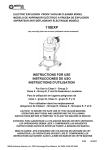



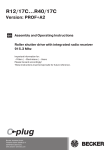

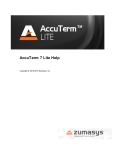
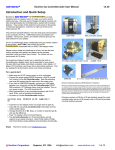

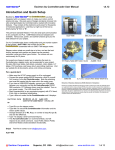
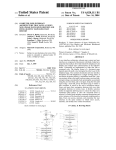
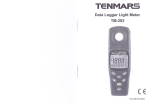
![`95385109 1%]?](http://vs1.manualzilla.com/store/data/005699459_1-7fc02fda0f8970d7c2f678aea00486d8-150x150.png)

